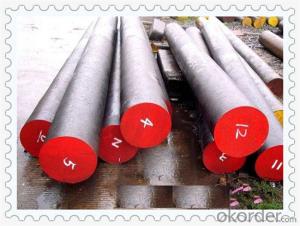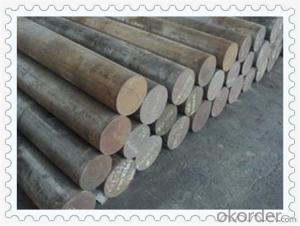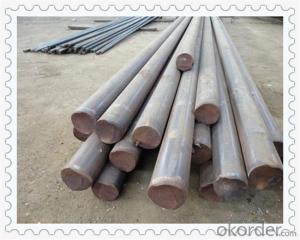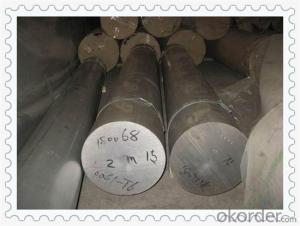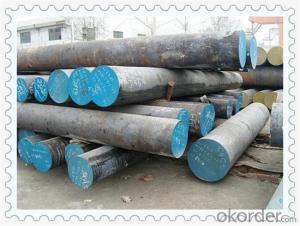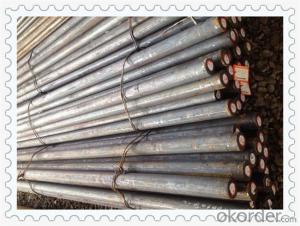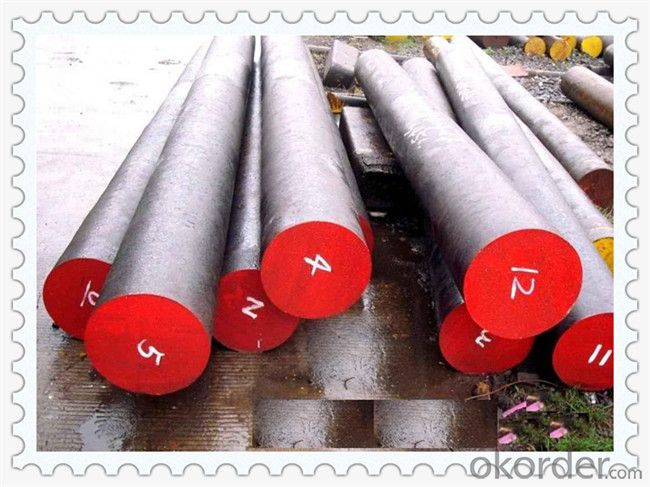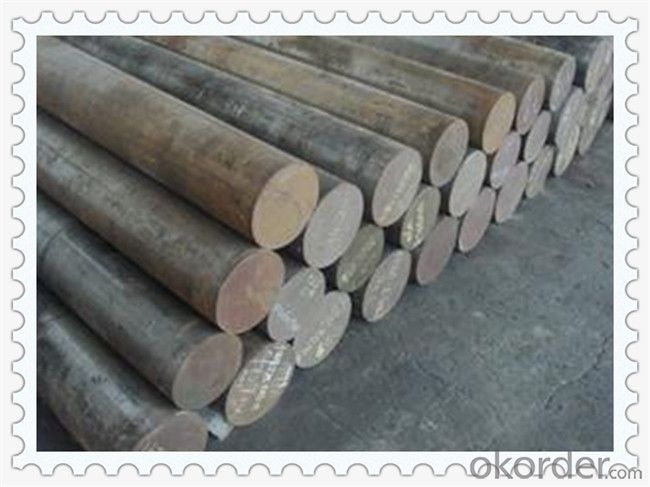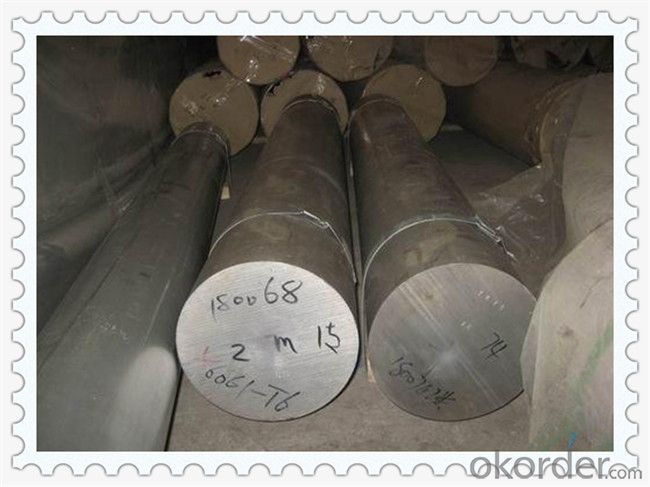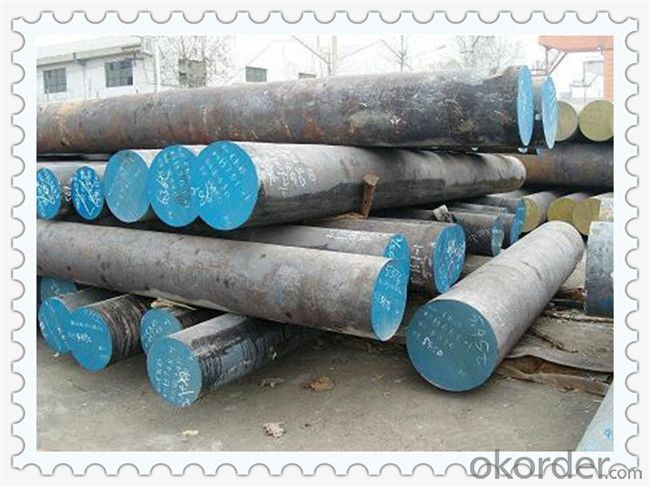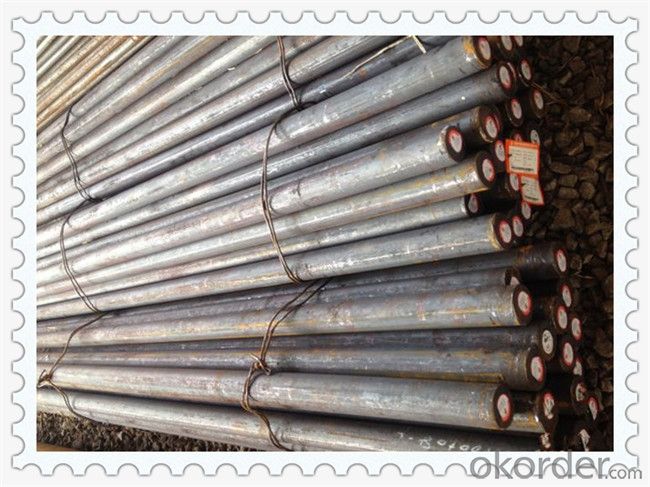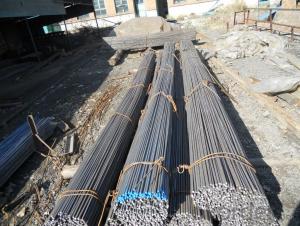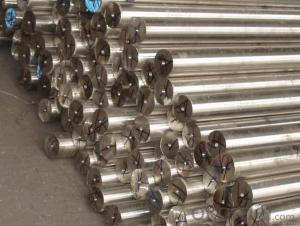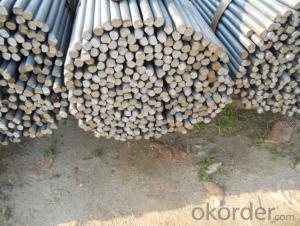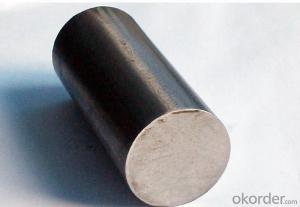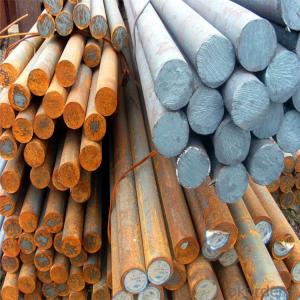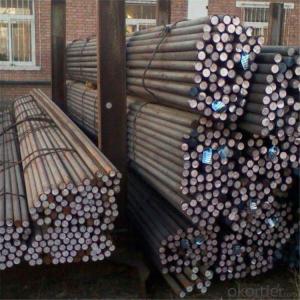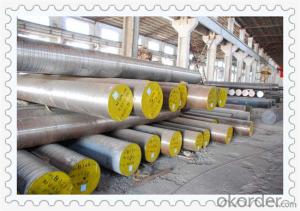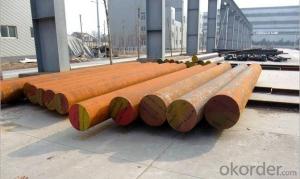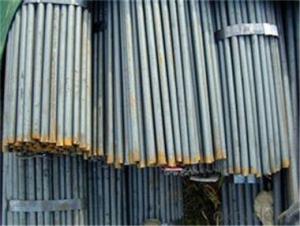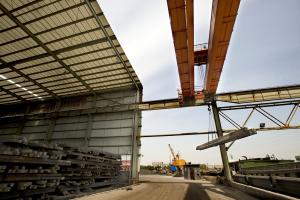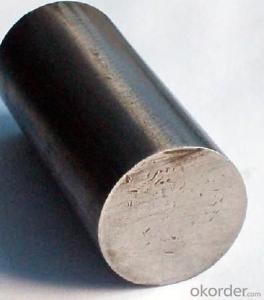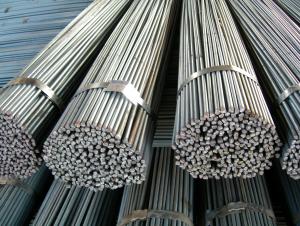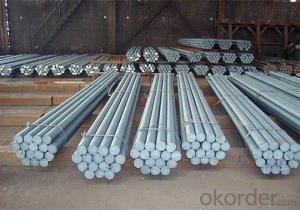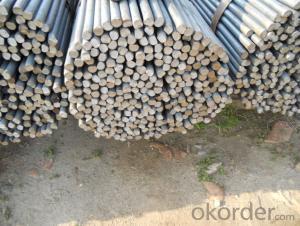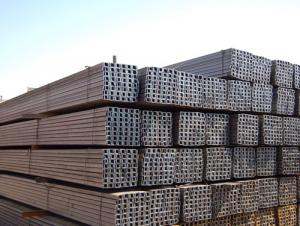Hot Rolled Round Steel C45 Bars
- Loading Port:
- China main port
- Payment Terms:
- TT OR LC
- Min Order Qty:
- 30 m.t.
- Supply Capability:
- 10000 m.t./month
OKorder Service Pledge
OKorder Financial Service
You Might Also Like
Hot Rolled Round Steel C45 Bars
Technical Paramenters
1. Chemical Composition(%)
C | Si | Mn | P | S | Cr | Ni | Cu | Al |
0.4~0.5 | 0.2~0.3 | 0.6~0.7 | ≤0.016 | ≤0.008 | ≤0.023 | ≤0.014 | 0.018 | ≤0.005 |
2. Comparable steel
GB | DIN | JIS | AISI |
45# | 1.1191 | S45C | 1045 |
3.Delivery Condition
Hor-rolled,black surface Hardness: ≤229HB.
4. Size Specification
Round Steel:Diameter:60~300mm; Length:2000~5800mm
Plate/Sheet Steel:Thickness:20-300MM;Width:200~2200mm;
Length:2000~5800mm
(We also can produce according to customer’s requirement)
5. Material character
Usually use for injection plastic mould, mould frame and some middle-range machine.
6. Application
Used for making the mould bottom, plastic mould and normal machinery parts
Products Show
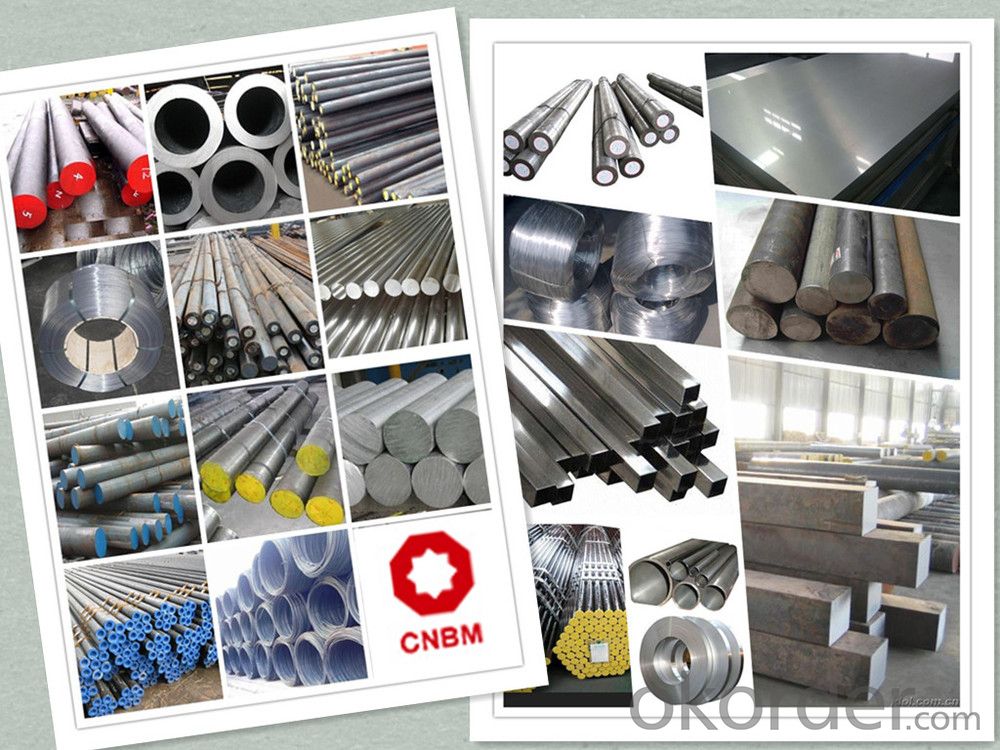
Product Overviews
| Product Name | Typical Grades | Diameter(mm) | Standard adopted |
| Carbon Steel | 20 (1020/S20C/C22) | Ø16-Ø300 |
GB/SAE/JIS/DIN
|
| 40 (1040/S40C/C40) | |||
| 45 (1045/S45C/C45) | |||
| Bearing Steel | GCr9 (51100/SUJ1) | Ø12-Ø250 | |
| GCr15 (52100/SUJ2/100Gr6) | |||
| GCr9SiMn (A485-Gr.1/SUJ3) | |||
Cr-Mo Steel | 20Cr (5120/SCr420H/20Cr4) | Ø12-Ø250 | |
| 40Cr (5140/SCr440/41Cr4) | |||
| 42CrMo(4140/SCM440/42CrMo4) | |||
| Gear Steel | 20CrNiMo | Ø16-Ø600 | |
| 20CrMn(5115/SMnC420/20MnCr5) | |||
| 20CrNiMo(8620/SNCM220/20CrMiMo2) |
Application
| Carbon Steel | Mold bottom, Plastic mold, Construction machinery parts Automobile parts, Security grills, Screens, Construction |
| Bearing Steel | Aerospace, Navigation, Nuclear energy, Chemical industry Electronic information, Petrochemical, Instrument and meter Transportation |
| Cr-Mo Steel | Mechanism & Fasteners gear, Stressed components for vehicles Engines and machines, Parts of larger cross-section |
| Gear Steel | All kinds of gears, Statically and dynamically stressed component for vehicles Engines and machine, Larger cross-section parts, Crankshafts |
Work Shop
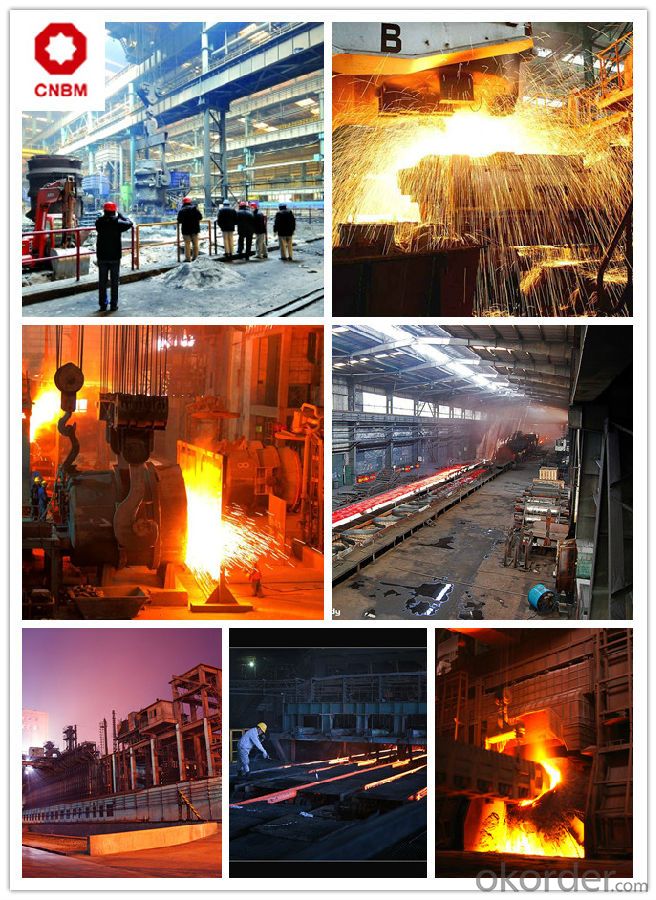
Company Information
CNBM International Corporation is the most important trading platform of CNBM group.
Whith its advantages, CNBM International are mainly concentrate on Cement, Glass, Iron and Steel, Ceramics industries and devotes herself for supplying high qulity series of refractories as well as technical consultancies and logistics solutions.

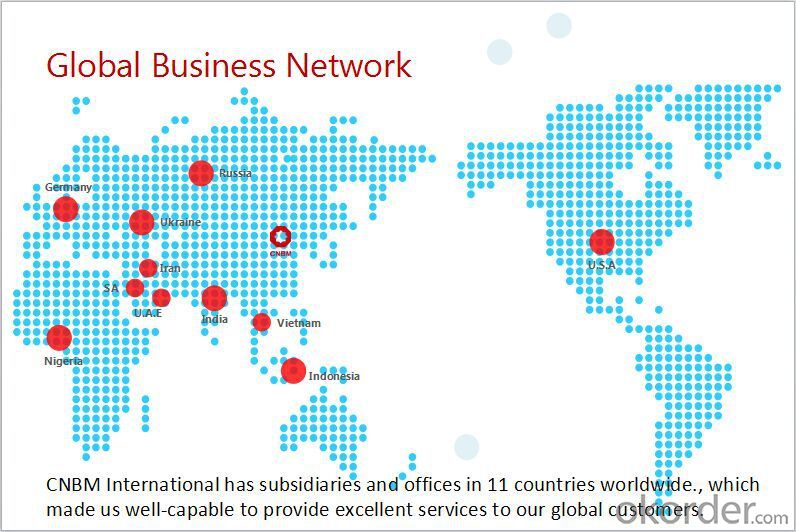
FAQ
1, Your advantages?
professional products inquiry, products knowledge train (for agents), smooth goods delivery, excellent customer solution proposale
2, Test & Certificate?
SGS test is available, customer inspection before shipping is welcome, third party inspection is no problem
3, Factory or Trading Company?
CNBM is a trading company but we have so many protocol factories and CNBM works as a trading department of these factories. Also CNBM is the holding company of many factories.
4, Payment Terms?
30% TT as deposit and 70% before delivery.
Irrevocable L/C at sight.
5, Trading Terms?
EXW, FOB, CIF, FFR, CNF
6, After-sale Service?
CNBM provides the services and support you need for every step of our cooperation. We're the business partner you can trust.
For any problem, please kindly contact us at any your convenient time.
We'll reply you in our first priority within 24 hours.
Packaging & Delivery
1, Packaging: seaworthy package or as required
2, Delivery: 35-45 days or based on quantity
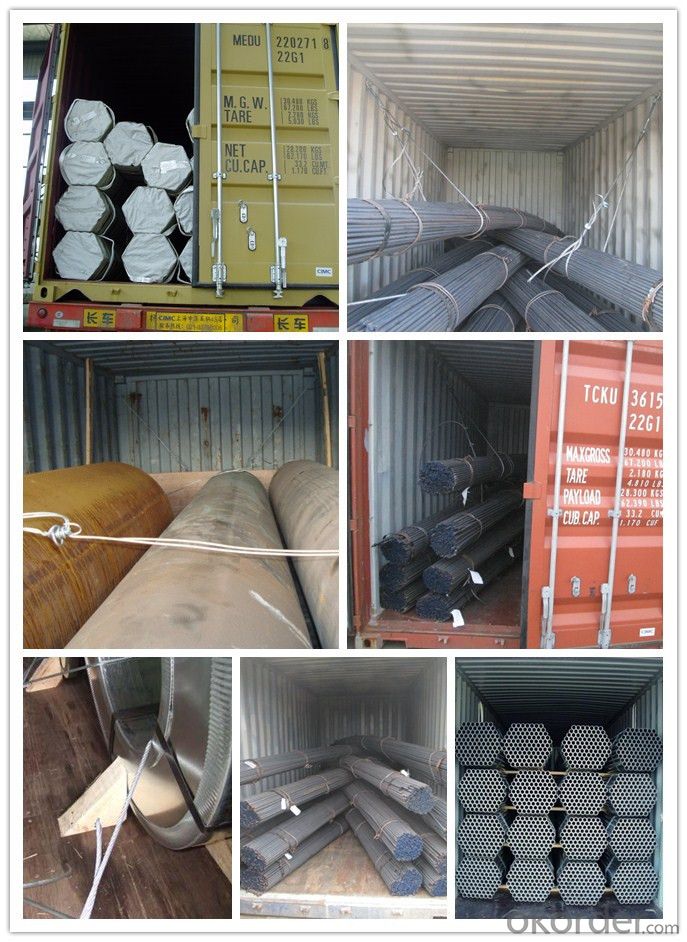
- Q: What kind of steel is used for anchor bolt material? What's the quality of anchor bolt material?
- The tensile capacity of the anchor bolt is the tensile capacity of the round bar itself. The size is equal to the sectional area multiplied by the allowable stress (Q235B:140MPa, 16Mn, or, Q345:170MPA), that is, the allowable tensile load capacity at design time.
- Q: What are the different types of steel round bars used in the defense industry?
- In the defense industry, various steel round bars are commonly employed due to their strength, durability, and ability to withstand harsh conditions. Some of the frequently utilized types are as follows: 1. High-strength low-alloy (HSLA) steel round bars: These bars possess a high strength-to-weight ratio, making them ideal for applications where weight reduction is crucial. They find extensive use in the construction of armored vehicles, tanks, and other military equipment. 2. Stainless steel round bars: Stainless steel exhibits remarkable resistance to corrosion and rust, making it an excellent choice for defense applications exposed to moisture or harsh environments. Its wide usage includes the manufacturing of military aircraft, naval vessels, and firearms. 3. Carbon steel round bars: Carbon steel is a versatile and cost-effective material extensively used in the defense industry. It offers excellent strength and hardness, making it suitable for various applications, such as missile components, gun barrels, and armor plates. 4. Alloy steel round bars: Alloy steel is a blend of different metals, typically including chromium, molybdenum, and nickel, which enhances its mechanical properties. It finds common application in the production of military-grade vehicles, artillery systems, and munitions. 5. Tool steel round bars: Tool steel is specifically designed to possess exceptional hardness, wear resistance, and toughness. It is often employed in the manufacturing of cutting tools, drills, and other equipment utilized in the defense industry. Each type of steel round bar possesses unique properties and advantages, enabling it to meet specific requirements within the defense sector. The selection of the appropriate steel round bar depends on the specific application and the desired performance characteristics needed to meet the demands of the defense industry.
- Q: Are steel round bars available in different lengths?
- Yes, steel round bars are available in different lengths. Steel round bars come in various lengths to accommodate different needs and applications. The length options can vary depending on the supplier or manufacturer. Common lengths for steel round bars range from 6 to 12 feet, but custom lengths can also be obtained through special requests. The availability of different lengths allows for greater flexibility in construction and fabrication projects, as it enables the bars to be cut or modified to specific requirements.
- Q: What are the properties of steel round bars?
- Steel round bars have several properties that make them a popular choice in various industries. Firstly, steel round bars are known for their strength and durability. Steel is one of the strongest materials available, and this strength is retained in the round bar form. This makes steel round bars ideal for applications where high strength and toughness are required, such as in construction, manufacturing, and engineering. Secondly, steel round bars have excellent machinability. They can be easily cut, drilled, and shaped, making them versatile for use in different projects. This property allows for easy fabrication and customization of the round bars to meet specific requirements. Furthermore, steel round bars have good corrosion resistance. They are often made from stainless steel or alloyed steel, which increases their resistance to rust and other forms of corrosion. This makes them suitable for use in outdoor and harsh environments, where exposure to moisture and chemicals can cause damage to other materials. Another important property of steel round bars is their high thermal and electrical conductivity. This makes them suitable for applications where heat or electricity needs to be conducted efficiently, such as in electrical systems or heat exchangers. Additionally, steel round bars have a smooth and polished surface finish. This not only enhances their aesthetics but also improves their resistance to wear and tear. The smooth surface reduces friction and allows for easy movement or rotation, making steel round bars suitable for use in mechanical components and machinery. Lastly, steel round bars are available in a wide range of sizes, grades, and finishes. This allows for flexibility in application and ensures that the right round bar can be selected based on specific requirements. Overall, the properties of steel round bars, including their strength, machinability, corrosion resistance, thermal and electrical conductivity, surface finish, and availability in various sizes and grades, make them a versatile and reliable choice for many industrial applications.
- Q: What is the maximum silicon content allowed for steel round bars?
- The maximum silicon content allowed for steel round bars can vary depending on the specific grade and application of the steel. However, in general, the maximum silicon content for most standard carbon and alloy steels used in round bars is typically around 0.35% to 0.45%. Exceeding this limit can lead to detrimental effects on the steel's mechanical properties, such as reduced toughness and increased brittleness. It is important to consult the relevant industry standards and specifications to determine the specific maximum silicon content allowed for a particular steel grade and intended use.
- Q: What is the difference between a turned and a polished steel round bar?
- A turned steel round bar and a polished steel round bar both undergo separate processes that result in different surface finishes and properties. A turned steel round bar is typically created by using a lathe machine to remove material from the surface of a steel bar. This process involves rotating the bar against a cutting tool, which cuts away the outer layer and leaves behind a smooth and cylindrical surface. The turned bar may have visible machining marks due to the cutting process, although it is generally considered to have a more precise and uniform diameter compared to other types of steel bars. Turned bars are often used in applications where dimensional accuracy is crucial, such as in machinery or tooling. On the other hand, a polished steel round bar undergoes a different process that involves grinding or buffing the surface to achieve a smooth and reflective finish. Polishing removes any imperfections or roughness from the surface of the steel bar, resulting in a highly lustrous appearance. Polished bars are often used in decorative applications or where visual aesthetics are important, such as in architectural designs or high-end consumer products. In summary, the main difference between a turned and a polished steel round bar lies in their respective manufacturing processes and resulting surface finishes. A turned bar is machined to achieve precise dimensions, while a polished bar is subjected to a polishing process to obtain a smooth and reflective surface. The choice between the two depends on the specific requirements of the application, with turned bars being preferred for dimensional accuracy and polished bars for aesthetic appeal.
- Q: What are the advantages of using cobalt-alloy steel round bars?
- There are several advantages of using cobalt-alloy steel round bars. Firstly, cobalt-alloy steel has excellent strength, hardness, and wear resistance, making it suitable for applications that require durability and long-lasting performance. Additionally, cobalt-alloy steel has high temperature resistance, making it ideal for use in high-temperature environments. Furthermore, cobalt-alloy steel offers excellent corrosion resistance, making it suitable for applications in harsh and corrosive environments. Lastly, cobalt-alloy steel round bars can be easily machined and fabricated, offering flexibility and ease of use for various manufacturing processes.
- Q: Can steel round bars be bent?
- Yes, steel round bars can be bent. The flexibility of steel allows it to be shaped and manipulated into various forms, including bending round bars into desired angles or curves.
- Q: Can steel round bars be recycled?
- Yes, steel round bars can be recycled. Steel is a highly recyclable material, and this includes steel round bars. Recycling steel round bars involves collecting the scrap material, melting it down, and then reshaping it into new steel products. This process can be done repeatedly without compromising the quality or strength of the steel. Recycling steel round bars not only conserves natural resources but also reduces energy consumption and greenhouse gas emissions compared to producing new steel. It is an environmentally friendly option that helps to promote sustainability and reduce waste.
- Q: How do you determine the straightness of a steel round bar?
- To determine the straightness of a steel round bar, there are several methods that can be used. One common method is visual inspection, where the bar is carefully examined for any visible bends, twists, or deviations from a straight line. This can be done by placing the bar on a flat surface and checking for any gaps or unevenness between the surface and the bar. Another method is to use a straightedge or a precision ruler. By placing the straightedge or ruler along the length of the bar, any deviations from a straight line can be easily detected. This method allows for more precise measurements and can help identify even slight bends or curves. Measuring devices such as dial indicators or laser alignment tools can also be used to determine the straightness of a steel round bar. These devices provide more accurate measurements and can quantify the degree of straightness by providing numerical readings of any deviations from a straight line. It is important to note that the acceptable level of straightness may vary depending on the specific application or industry standards. In such cases, specific tolerances or guidelines may need to be followed to ensure that the steel round bar meets the required straightness criteria. Overall, determining the straightness of a steel round bar requires careful visual inspection and the use of appropriate measuring tools to ensure that it meets the necessary straightness standards for its intended use.
Send your message to us
Hot Rolled Round Steel C45 Bars
- Loading Port:
- China main port
- Payment Terms:
- TT OR LC
- Min Order Qty:
- 30 m.t.
- Supply Capability:
- 10000 m.t./month
OKorder Service Pledge
OKorder Financial Service
Similar products
Hot products
Hot Searches
Related keywords
